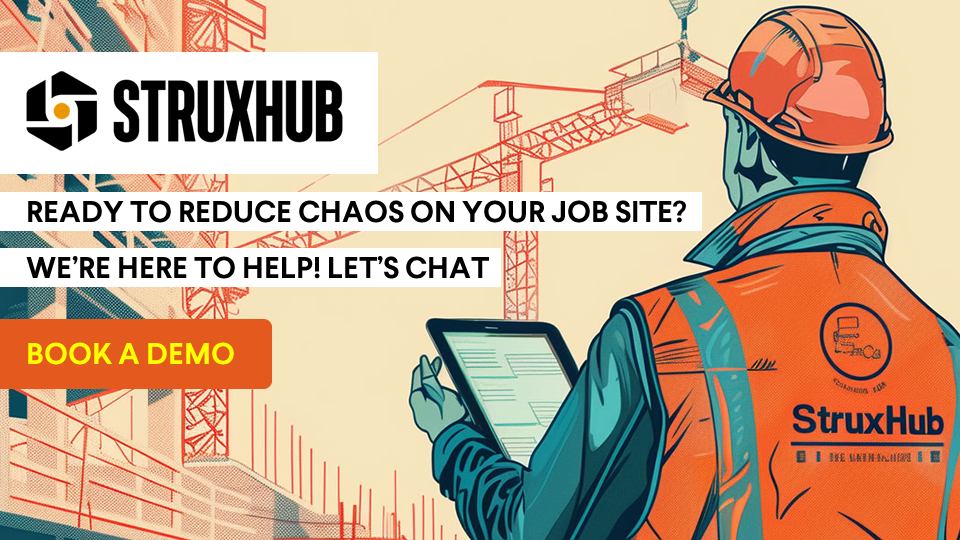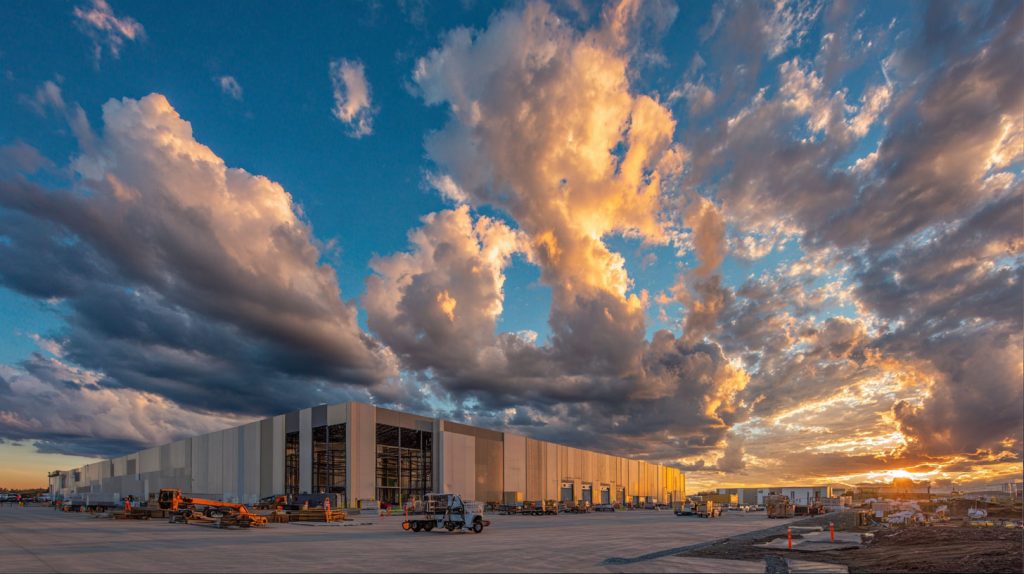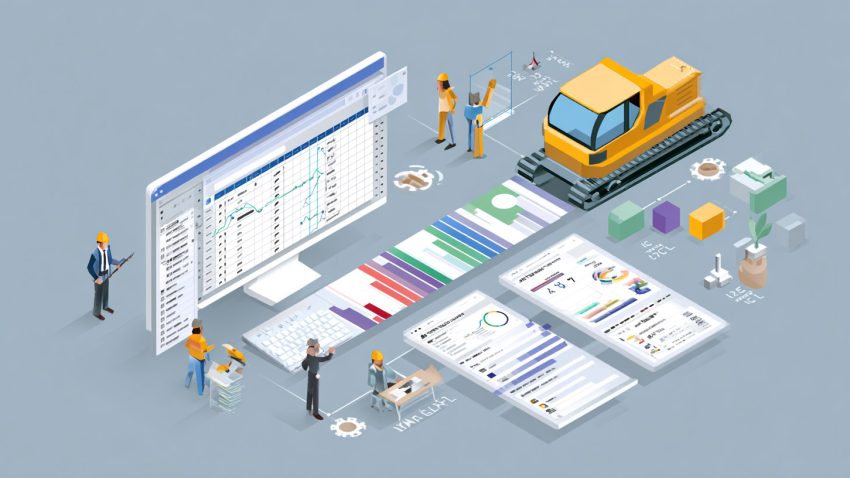How Can Superintendents Make Sure Every Crew Completes a Pre-Task Plan (PTP) Before Starting Work Each Day?
Table of Contents:

Every superintendent knows that the success of the day starts before the first tool is lifted. A well-prepared Pre-Task Plan (PTP) or job safety analysis—is the foundation of safe, efficient construction. It ensures every crew understands what work will be performed, what hazards exist, and what steps are in place to prevent accidents. But in reality, getting every team to complete a PTP consistently can feel like an uphill battle.
Crews are busy. Schedules are tight. Paper forms get misplaced. And sometimes, safety planning gets treated as an afterthought instead of an essential part of the job. Yet without daily PTP compliance, even the most experienced teams are at risk of miscommunication, inefficiency, or worse—serious injury.
That’s why top-performing superintendents are using a mix of leadership strategies and digital safety tools to ensure PTPs are completed every single morning. They make safety planning part of the workflow, not an extra task. Using automation, reminders, and real-time tracking, they keep every crew accountable—without adding more paperwork or stress.
In this article, we’ll explore the most effective ways superintendents can make sure every crew completes their Pre-Task Plan before starting work each day—including leadership best practices, digital enforcement strategies, and how platforms like StruxHub simplify compliance and documentation in real time.
Why Daily Pre-Task Plans Are Non-Negotiable
A daily PTP isn’t just a safety form it’s the cornerstone of clear communication, coordination, and accountability. It ensures everyone on site is aligned on the day’s objectives and hazards, which is especially critical when multiple trades are working in the same areas.
Skipping PTPs can lead to costly errors: crews start without the right PPE, hazards go unaddressed, or critical control measures are overlooked. These oversights don’t just create risks—they slow progress, damage trust, and can trigger expensive delays or citations.
Superintendents who make PTPs part of the job’s DNA see fewer incidents, stronger teamwork, and smoother daily starts. When safety discussions become routine, crews know exactly what’s expected of them, and the project runs more predictably.
Top Benefits
- Ensures consistency and safety awareness across all trades.
- Reduces rework and downtime from unclear communication.
- Builds a proactive safety culture driven by daily planning.
Best Practices
- Review PTPs every morning before granting work authorization.
- Incorporate PTP reviews into daily coordination or stretch-and-flex meetings.
- Recognize crews that complete high-quality PTPs consistently.
Q&A Mini Section
Q: Why is a PTP required daily?
A: Because conditions, crews, and risks change every day, each shift presents new variables that must be reviewed.
Q: What’s the most common reason crews skip PTPs?
A: Time pressure, many crews view it as “extra paperwork” instead of part of the workflow.
Q: How can superintendents change that perception?
A: By leading PTP reviews actively and connecting them directly to safety outcomes and productivity gains.
Daily PTPs aren’t bureaucracy, they’re the foundation of a safe, efficient, and coordinated jobsite.

How Leadership and Consistency Drive PTP Compliance
Getting every crew to complete their PTPs consistently isn’t about enforcement—it’s about culture. When superintendents lead by example, crews follow suit. Workers who see their leaders prioritize safety planning are more likely to treat it seriously.
Consistency is key. Superintendents who start every morning with a quick PTP check create an expectation that’s impossible to ignore. They don’t skip reviews because of tight schedules—they make time for them, proving that safety comes first. Over time, this discipline builds habits that last beyond a single project.
Clear communication also plays a role. When foremen know exactly how and when to submit their PTPs, compliance becomes seamless. The most successful superintendents standardize submission times, formats, and review steps so every crew knows what’s required—no excuses, no confusion.
Top Benefits
- Builds a strong culture of accountability and safety awareness.
- Increases participation through consistent daily expectations.
- Reduces micromanagement by empowering crews to self-regulate.
Best Practices
- Lead every morning’s safety discussion personally when possible.
- Set clear deadlines and hold foremen accountable for completion.
- Provide feedback on PTP quality, not just completion.
Q&A Mini Section
Q: How can superintendents motivate crews to take PTPs seriously?
A: By demonstrating that safety planning is directly tied to productivity and respect for the craft.
Q: Should crews write their own PTPs or follow templates?
A: Both—templates ensure consistency, but field input ensures relevance.
Q: What happens if a crew refuses to complete a PTP?
A: Work shouldn’t start until the PTP is finished—superintendents must enforce this consistently to set the standard.
Strong leadership turns compliance into culture—when superintendents lead, crews follow.
How Digital Platforms Make PTP Completion Automatic
One of the biggest barriers to PTP compliance is logistics—tracking forms, collecting signatures, and verifying completion across multiple crews. Digital construction safety platforms solve that problem by automating the entire process.
With tools like StruxHub, crews can complete PTPs on tablets or phones, submit them instantly, and sign off digitally. Superintendents can then view a live dashboard showing which crews have completed their PTPs, which are pending, and what hazards have been identified. This eliminates manual tracking and gives leaders real-time assurance that every task is covered.
Digital platforms also send automatic reminders to foremen and team leads, ensuring no PTP slips through the cracks. AI analytics even flag recurring hazards or incomplete plans, allowing proactive intervention before issues arise.
Top Benefits
- Tracks PTP completion in real time across all trades and crews.
- Automates reminders and sign-off verification.
- Reduces administrative workload for superintendents.
Best Practices
- Require crews to submit digital PTPs before starting work.
- Review dashboard metrics daily to confirm compliance.
- Integrate digital safety tools with scheduling for seamless coordination.
Q&A Mini Section
Q: How do digital systems keep crews accountable?
A: They create timestamped records and automatic alerts, ensuring every PTP is completed before work begins.
Q: Do digital PTPs work offline?
A: Yes—most modern systems allow offline entry and sync once connected.
Q: How does this help large or multi-site projects?
A: Superintendents gain centralized oversight, eliminating the guesswork and manual follow-ups of paper systems.
Digital PTP tools take the stress out of compliance—making safety planning part of the daily routine, not an extra task.
How Accountability and Follow-Through Keep Crews Consistent
Even with clear expectations, accountability is what ensures PTPs are completed daily—and completed well. Superintendents set the tone by holding every crew to the same standard and following up regularly. It’s not about punishment; it’s about maintaining consistency and pride in craftsmanship.
Accountability starts with visibility. Crews are more likely to stay compliant when they know their PTPs are being reviewed. That’s why top-performing superintendents use dashboards or morning summaries to show completion rates by trade. This public visibility creates healthy competition and reinforces the idea that safety is a team effort.
Feedback is just as important. When PTPs are rushed, incomplete, or copied from the previous day, it’s a signal that crews need more engagement—not reprimand. Recognize the crews who do it right and coach those who don’t. Consistency, communication, and recognition build a feedback loop that keeps everyone invested.
Top Benefits
- Creates consistent daily safety habits across all crews.
- Encourages ownership and accountability through transparency.
- Builds trust between leadership and field teams.
Best Practices
- Review completion rates weekly with foremen and safety officers.
- Celebrate top-performing crews during toolbox talks.
- Use feedback as a teaching tool, not a disciplinary one.
Q&A Mini Section
Q: How can superintendents make accountability positive?
A: By recognizing and rewarding crews who consistently deliver high-quality, thoughtful PTPs.
Q: What should be done if a PTP is incomplete?
A: Address it immediately—pause the task, review the issue, and help the crew correct it.
Q: Can accountability be automated?
A: Yes—digital systems automatically log completions and flag missing PTPs for review.
Accountability isn’t about control—it’s about empowering crews to take responsibility for their own safety and the success of the project.

StruxHub
Experience the power of StruxHub today and witness firsthand how it can revolutionize your construction operations.
How Mobile Verification and Instant Access Keep Work Moving
On large construction sites, time is everything. Waiting for paperwork or approvals slows down productivity, frustrates crews, and wastes valuable field hours. Mobile-enabled PTP verification solves this problem by making it possible to review, approve, and confirm safety readiness from anywhere.
Using a mobile safety platform, superintendents can verify completion in seconds. As soon as a crew submits their PTP, it appears on the dashboard for review. Crews receive instant feedback or approval notifications, allowing them to begin work without delay.
This speed keeps the site running efficiently while maintaining compliance. It also ensures that no team starts work without proper planning, even when the superintendent is managing multiple zones or remote areas.
Mobile verification also increases accessibility—crews can pull up the latest safety plans, photos, or hazard controls directly from their devices. Everyone stays aligned, informed, and ready.
Top Benefits
- Speeds up approvals while maintaining strict safety compliance.
- Provides instant visibility into crew readiness.
- Improves efficiency on large or multi-site projects.
Best Practices
- Require mobile verification before granting work access.
- Use live dashboards to monitor approval times.
- Keep archived digital records for quick reference.
Q&A Mini Section
Q: How does mobile verification save time?
A: It removes delays by allowing instant submission and approval from the field.
Q: Can supervisors approve multiple PTPs at once?
A: Yes—digital dashboards enable bulk approvals or rapid review by trade or area.
Q: How do crews know when their PTPs are approved?
A: Automated alerts or push notifications confirm readiness instantly.
Mobile verification keeps the project moving safely—no waiting, no guesswork, just real-time readiness.

How Data and Analytics Help Track PTP Compliance
Tracking PTP completion manually is nearly impossible on large projects. That’s where data analytics come in. Modern safety platforms automatically log every PTP submission, sign-off, and update—creating a clear, measurable record of compliance across the entire workforce.
Superintendents can see which trades submit their PTPs consistently and which areas need attention. Over time, analytics reveal trends like peak-risk activities, recurring hazards, or times of day when PTP quality dips. This insight allows leaders to make targeted improvements, adjust manpower, or update training.
Compliance tracking isn’t just about numbers—it’s about accountability and foresight. Having accurate, time-stamped data protects contractors during audits, owner reviews, and insurance assessments. It also ensures that safety planning becomes part of the project’s long-term data strategy.
Top Benefits
- Tracks PTP completion rates automatically across all trades.
- Provides measurable insight into compliance and safety trends.
- Strengthens documentation for audits and owner reporting.
Best Practices
- Review weekly compliance metrics with leadership.
- Use trend data to identify training or communication gaps.
- Store analytics securely for use in audits or post-project reviews.
Q&A Mini Section
Q: How does analytics improve daily safety performance?
A: It identifies weak spots early, allowing superintendents to intervene before issues escalate.
Q: Can PTP data be used for long-term improvement?
A: Yes—tracking compliance over multiple projects helps refine company-wide safety programs.
Q: How often should compliance data be reviewed?
A: Ideally weekly, but real-time dashboards allow daily monitoring for high-risk projects.
Data-driven compliance ensures no crew slips through the cracks—creating a culture of consistency and measurable improvement.
How StruxHub Helps Superintendents Ensure 100% Daily PTP Completion
StruxHub gives superintendents the tools they need to guarantee that every crew completes their Pre-Task Plan before work begins—no exceptions. The platform automates daily safety workflows, tracks completion in real time, and makes PTP verification part of the standard workday instead of an extra step.
Crews complete and sign PTPs digitally through StruxHub’s mobile app. As soon as they submit, superintendents receive instant alerts confirming completion. The live dashboard displays every crew’s status—completed, pending, or overdue—allowing leaders to follow up immediately.
AI-powered analytics identify trends, recurring hazards, and participation rates, helping safety managers target specific issues. Automatic reminders and compliance reports eliminate manual tracking while improving accountability across every trade.
For superintendents managing multiple crews or sites, StruxHub provides centralized visibility and total peace of mind. With every PTP verified before work starts, projects stay compliant, safe, and productive.
Top Benefits
- Automates daily PTP submission, review, and tracking.
- Provides real-time dashboards for total site visibility.
- Uses AI analytics to improve safety engagement and compliance.
Best Practices
- Require all PTPs to be submitted via StruxHub before shift start.
- Review analytics weekly to identify participation trends.
- Use reminders and alerts to maintain full crew accountability.
Q&A Mini Section
Q: How does StruxHub enforce PTP completion?
A: It automates tracking and reminders so no PTP is missed or delayed.
Q: Can superintendents monitor multiple sites simultaneously?
A: Yes—StruxHub’s cloud dashboard consolidates PTP data from every site in one view.
Q: What’s the main benefit for crews?
A: Less paperwork, faster approvals, and clear safety expectations every day.
StruxHub transforms daily PTP management from a challenge into a seamless, automated process—helping superintendents lead safer, smarter, and more organized jobsites.

FAQ
Why is it so hard to get every construction crew to complete a PTP daily?
It’s not that workers don’t care about safety—it’s that traditional Pre-Task Planning often feels disconnected from the pace and pressure of real-world construction. Crews juggle tight schedules, heavy workloads, and shifting priorities. When PTPs are paper-based, they add an extra administrative burden that feels redundant or time-consuming.
Many superintendents struggle with compliance because the process lacks visibility and accountability. If there’s no way to confirm who completed their plan—or if it’s buried in paperwork—crews may treat it as optional. Additionally, inconsistent supervision across multiple zones can make daily verification nearly impossible without a digital system in place.
The solution lies in making PTPs part of the work itself, not an afterthought. When crews see that safety planning helps them work faster, avoid mistakes, and reduce delays, participation naturally increases. Digital tools simplify this by turning PTPs into quick, accessible forms that can be reviewed and signed on mobile devices before anyone starts work.
In short, PTP compliance isn’t about discipline—it’s about integration. The easier and more meaningful the process becomes, the more consistently crews engage with it.
What are the best ways to improve daily PTP compliance?
Improving compliance starts with consistency, visibility, and leadership. Crews are more likely to complete PTPs daily when they see clear expectations and follow-through from their superintendent.
Start each morning with a short PTP review meeting. Discuss key hazards, verify that every crew has completed their plan, and reinforce the connection between safety and productivity. Make it a non-negotiable part of the daily routine—just like toolbox talks or stretch-and-flex exercises.
Visibility is another key factor. When compliance rates are displayed publicly on dashboards or announced during coordination meetings, it reinforces accountability. Recognition also works—acknowledge crews that consistently produce strong, thoughtful PTPs.
Finally, technology makes compliance automatic. Digital platforms like StruxHub send reminders, track completion in real time, and allow superintendents to verify that no crew starts work without an approved plan. When expectations are clear and tools make compliance simple, participation becomes the norm instead of the exception.
StruxHub
Discover how StruxHub can revolutionize your construction management. Contact us today!
How does digital software help superintendents track PTP completion?
Digital safety platforms revolutionize how superintendents manage and track Pre-Task Plans. Instead of manually collecting paper forms, software like StruxHub provides live dashboards showing the status of every crew’s PTP—completed, pending, or overdue.
When crews submit PTPs digitally, the system automatically records timestamps, signatures, and hazards identified. Superintendents receive real-time notifications when plans are submitted or when updates are required. AI-powered analytics can even flag incomplete PTPs or identify recurring risk trends across trades.
This instant visibility saves hours of administrative work and eliminates uncertainty. Superintendents no longer have to chase forms or guess which teams are ready. Everything is accessible in one place—from current-day compliance to historical records for audits and reporting.
By turning safety planning into a real-time, data-driven process, digital platforms help superintendents stay proactive. They can verify readiness, coach underperforming crews, and focus their attention where it matters most—on leadership, not paperwork.
How can superintendents encourage crews to take PTPs seriously?
The key to engagement is ownership. When workers see PTPs as “management paperwork,” they disengage. But when they’re part of the process—identifying hazards, suggesting solutions, and seeing their feedback acted upon—they take pride in their role in safety.
Superintendents can strengthen engagement by leading PTP discussions with energy and purpose. Instead of reading forms aloud, ask open-ended questions: “What could go wrong here?” or “What’s different about today’s task?” This creates two-way dialogue and reinforces awareness.
Recognition also goes a long way. Thanking crews publicly for detailed PTPs or hazard spotting builds motivation and sets a positive example for others.
Digital tools reinforce this by making the process smoother and more interactive. Mobile PTPs allow crews to add photos, tag hazards, or submit feedback instantly, making them feel involved. The more interactive and visible the process becomes, the more seriously teams take it.
Ultimately, engagement comes from leadership that values communication, not just compliance.
How does StruxHub help superintendents achieve full PTP compliance?
StruxHub makes 100% daily PTP compliance achievable through automation, visibility, and accountability. The platform allows crews to complete and submit digital PTPs directly from mobile devices. Each submission is instantly logged, time-stamped, and stored in the cloud for easy access.
Superintendents can view every crew’s status in real time using StruxHub’s live dashboard. If a PTP is missing or incomplete, the system sends automatic reminders to the responsible team. This ensures no work begins without an approved safety plan.
AI analytics provide an extra layer of support by identifying recurring hazards, participation trends, and compliance rates across projects. Reports can be generated for owners, safety officers, or inspectors with just a few clicks.
In short, StruxHub removes the guesswork from PTP management. It gives superintendents total control, helps crews stay consistent, and transforms safety planning into a seamless part of the daily workflow—making “full compliance” a reality, not a goal.

StruxHub
Discover how StruxHub can revolutionize your construction management. Contact us today!
Related Pillar Articles:
Best Guide to Construction Logistics Plans (CLPs): What Owners Want to See Before Work Starts



